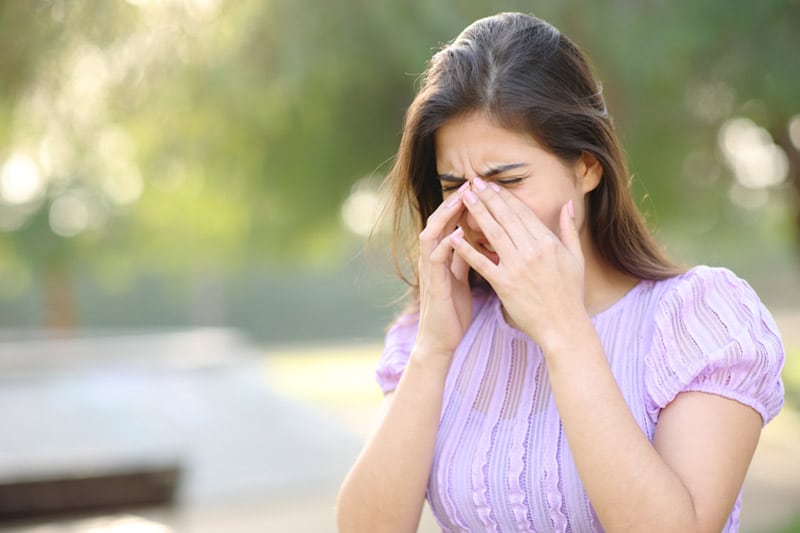Dry Eye
Dry eye syndrome affects millions of Americans each year. The common condition can be a temporary or chronic eye problem caused by numerous factors. Symptoms can range from mild irritation or redness to consistent stinging, burning, or scratching in the eye. The risk of dry eye increases as you grow older, as well as if you have a history of eye problems such as keratitis, conjunctivitis, or corneal infection.
What is dry eye syndrome?
Dry eye is an uncomfortable eye condition that affects the tear glands and tear ducts, which results in inadequate eye moisture and inflammation.
Symptoms of dry eye
- Dry, irritated eyes
- Stinging or burning
- Excess tearing
- The feeling of something being “stuck” in your eye
- Eye discharge
- Heavy eyelids
- Blurred vision

What causes dry eye?
Every time you blink, a protective coating of tears is spread over the surface of your eye. This layer is known as tear film, which has four primary functions:
- Protect and lubricate the outer surface of the eye
- Reduce the risk of developing an eye infection
- Rinse away foreign materials
- Keep the outer eye smooth and clear
Tear film is composed of three separate layers: an oil (lipid) layer, a water (aqueous) layer, and a mucin (mucous) layer. If one of these components is missing, tear film will not function properly, which can lead to dry eye syndrome.
What are the risk factors of dry eye syndrome?
In most cases, dry eye occurs when your eyes don’t produce enough tears to keep the eye healthy and lubricated. Some people, however, develop dry eye as a result of certain medications, allergies, hormone imbalances, or immune system disorders. Additional risk factors for dry eye include:
Dry eye treatment options
Treatment for dry eye depends on the severity of your symptoms. Mild dry eye symptoms can be treated with common, over-the-counter medications such as artificial tears, gels, or ointments. Changing medications, cutting back on screen time, taking regular eye breaks, or wearing wraparound sunglasses can also help alleviate mild dry eye symptoms.
Chronic dry eye symptoms, however, may benefit from prescription eye drops or medication. Frequent use of eye drops helps prevent corneal scarring or damage over time. Omega-3 supplements have also been shown to have a positive impact on chronic dry eye symptoms, as they can help your eyes produce excess oil to lubricate the cornea.
Surgical options for chronic dry eye are also available. Punctal plugs, also called tear duct plugs or lacrimal plugs, are tiny, biocompatible devices about the size of a grain of rice. Punctal plugs are inserted into the tear duct to prevent drainage, which helps increase the eye’s production of tear film. Punctal plugs are typically recommended when eye drops no longer help relieve dry eye symptoms.
Since dry eye can be caused by numerous factors, a comprehensive eye exam is the best way to diagnose the cause of your dry eyes. At your appointment, your doctor will review your medical history and analyze the health of your eyes. Tests may be performed to measure your tear production as well as the quality of your tears. The results of your comprehensive exam will help determine the best way to treat your dry eye symptoms.


